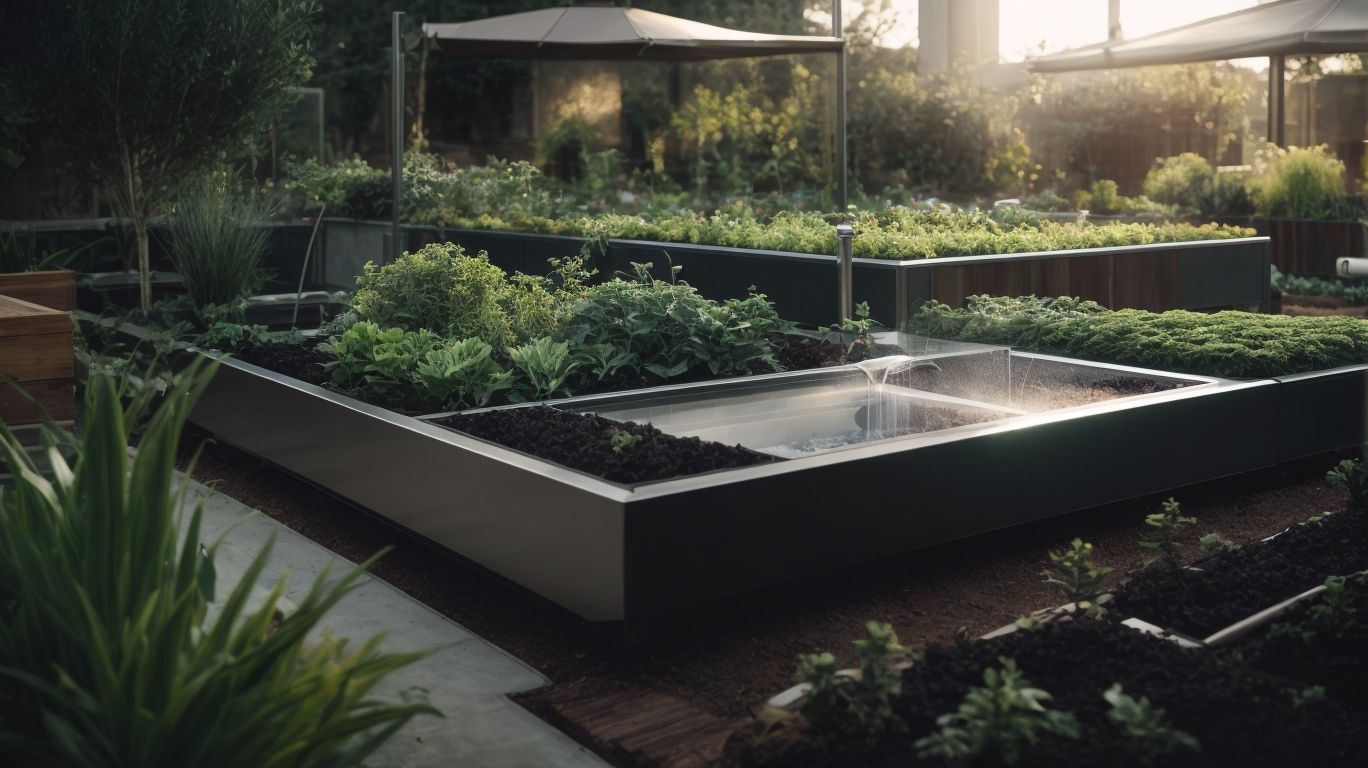Acidifying water is a crucial aspect of gardening that can significantly impact the health and growth of plants. In this comprehensive guide, we will explore the various methods for acidifying water and delve into the best practices for maintaining optimal pH levels in your gardening water.
From adding vinegar to utilizing citric acid and installing an acid injection system, we will cover the different techniques available to gardeners. We will discuss the importance of testing pH levels, using the correct amount of acidifying agents, and monitoring the water regularly.
By the end of this article, you will gain a deeper understanding of the benefits of acidifying water for gardening, including improved nutrient absorption, prevention of algae growth, and the creation of ideal growing conditions for acid-loving plants. Whether you are a seasoned gardener or just starting, this guide will equip you with the knowledge needed to enhance the health and vitality of your garden.
Key Takeaways:
What Is Acidifying Water?
Acidifying water refers to the process of reducing the pH and alkalinity levels of water to create a more suitable solution for irrigation and plant nutrition.
This adjustment can be crucial for horticultural and agricultural practices, as different plants have specific preferences for pH levels. By acidifying water, growers can tailor the nutrient management system to meet the unique needs of their crops, enhancing the availability of essential minerals like iron, zinc, and manganese. Regulating water acidity can help prevent the proliferation of harmful microorganisms, contributing to a healthier and more productive growing environment.
Why Is Acidifying Water Important for Gardening?
Acidifying water plays a crucial role in gardening as it directly impacts the availability of nutrients to plants, especially in environments with high pH and high alkalinity levels.
What Are the Different Methods for Acidifying Water?
There are several methods for acidifying water, including the use of vinegar, citric acid, and specialized acid injection systems designed to alter water pH and alkalinity levels.
Adding Vinegar
One method for acidifying water involves the addition of vinegar, which can effectively lower the pH levels of the water solution used in farming and hydroponic systems.
When using vinegar to acidify water, it is important to carefully measure and monitor the pH levels to ensure they are within the optimal range for plant growth, generally between 5.5 and 6.5 for most crops. The acetic acid in vinegar reacts with the alkaline minerals in the water, causing the pH to decrease. This acidic environment is crucial for the availability of certain nutrients essential for plant health and development.
In hydroponic systems, maintaining the right pH balance is vital for preventing nutrient deficiencies and maximizing nutrient uptake.
Using Citric Acid
Another method for acidifying water involves utilizing citric acid, which can be applied in the form of granules to modify the pH levels of nutrient solutions and water.
When citric acid is added to water, it acts as an acidifier, lowering the pH and making the environment more suitable for certain plants. In nutrient solutions, the addition of citric acid helps in adjusting the pH to an optimal range, promoting the availability of essential nutrients for plant growth.
The granular form of citric acid is convenient for precise application and gradual release into the water, ensuring a steady adjustment of pH levels without sudden fluctuations.
Installing an Acid Injection System
For larger scale operations, installing an acid injection system provides a precise and automated approach to adjusting the pH and alkalinity levels of water, offering convenience and consistent control for commercial farms.
This type of system plays a crucial role in maintaining optimal environmental conditions within large-scale farming setups. By efficiently regulating the pH levels of water, it facilitates the ideal growth conditions for crops and ensures the appropriate nutrient uptake. These systems integrate seamlessly with existing equipment and can be easily implemented into industrial-scale solutions, enhancing overall efficiency and productivity.
What Are the Best Practices for Acidifying Water in Gardening?
Implementing best practices for acidifying water in gardening involves precise testing of pH levels, understanding suitable nutrient ranges, and utilizing advanced tools such as EC meters for effective monitoring.
Test the pH Levels of Your Water
Start by testing the pH levels of your water using reliable methods such as those offered by the Soil, Water and Forage Analytical Laboratory (SWAFL) to accurately assess its quality and determine the necessary acidification measures.
Ensuring the pH levels of water are within the appropriate range is crucial for various applications, including agricultural practices, aquaculture, and industrial processes. The Soil, Water and Forage Analytical Laboratory (SWAFL) provides comprehensive and trustworthy testing services, enabling you to obtain accurate results that are essential for making informed decisions about water treatment and management.
It’s essential to consider the impact of suspended solids on pH levels as they can significantly affect the water’s acidity or alkalinity. High levels of suspended solids can interfere with pH readings, leading to inaccurate assessments. Therefore, reliable testing services not only analyze pH levels but also account for the presence of suspended solids, ensuring a comprehensive evaluation of water quality.
Use the Right Amount of Acidifying Agent
When acidifying water, it is crucial to use the appropriate amount of acidifying agent, ensuring a balanced approach to adjusting pH levels without causing adverse effects on nutrient composition or the buffering capacity of the solution.
Using acidifying agents such as citric acid, phosphoric acid, or lactic acid requires precision to prevent over-acidification, which could lead to nutrient loss or imbalances. These agents play a vital role in preserving the nutrient quality of the water while effectively reducing the pH.
Considering the potential interaction with other components such as calcium carbonate and the selection of appropriate buffering solutions, such as sodium bicarbonate or potassium bicarbonate, is essential for achieving the desired pH without jeopardizing the nutrient stability.
Monitor the pH Levels Regularly
Regular monitoring of pH levels using specialized tools like pH meters is essential in preventing human errors and ensuring the maintenance of suitable acidity levels for optimal nutrient availability and plant growth.
Automated pH monitoring systems have become increasingly popular in agricultural practices, offering precise and real-time pH data. These systems not only reduce the risk of human error but also play a crucial role in maintaining consistent acidity levels, which is imperative for effective nutrient management.
The use of pH meters also enables growers to make timely adjustments to irrigation water and nutrient solutions, thereby ensuring that plants receive the necessary nutrients in the correct proportions for healthy development.
Consider the Type of Plants Being Watered
When acidifying water, it’s important to consider the specific requirements of the plants being watered, particularly their preferred pH range and the availability of essential trace elements necessary for their growth and development.
Plants have varying preferences when it comes to the acidity or alkalinity of the soil and water they are grown in. Some plants, such as blueberries and azaleas, thrive in acidic soils with a pH range of 4.5-5.5, while others like spinach and cabbage prefer a more neutral pH of 6.0-7.0.
Certain crops may require specific trace elements, and the availability of these elements can be influenced by the pH of the growing medium. For example, iron and manganese availability decreases as soil pH increases, affecting the growth and overall health of plants.
Use Distilled or Rainwater Instead of Tap Water
Opting for distilled or rainwater as a source for acidifying water can mitigate the risk of nutrient shock and reduce the need for extensive labor in pH adjustment, ensuring a more controlled and efficient approach to water treatment.
By utilizing distilled or rainwater for pH adjustment, growers can avoid potential fluctuations in nutrient availability, thereby minimizing the risk of nutrient shock for plants. This approach not only leads to a more stable and optimized nutrient uptake but also reduces the labor and resources required for constant monitoring and adjustment.
Additionally, distilled or rainwater typically lacks the impurities found in traditional water sources, contributing to a more consistent and controlled water treatment process.
What Are the Benefits of Acidifying Water for Gardening?
Acidifying water offers several key benefits for gardening, including improved nutrient absorption for plants, prevention of algae growth, and the creation of ideal growing conditions for acid-loving plants.
Improves Nutrient Absorption for Plants
By adjusting the pH levels, acidifying water facilitates improved nutrient absorption for plants, particularly enhancing the availability of essential elements like magnesium, thereby contributing to vigorous growth and development.
Optimal pH levels are crucial for the bioavailability of nutrients in the root zone, influencing the uptake of various essential elements. Magnesium, in particular, plays a vital role in chlorophyll production and energy transfer within the plant, directly impacting growth and photosynthetic efficiency. When the pH is too high, certain essential elements become less accessible to the plant roots, leading to deficiencies, stunted growth, and diminished yields.
Acidifying agents, such as citric acid, can be used to lower the pH of water or nutrient solutions effectively. This adjustment enhances the solubility of essential nutrients, especially metal ions, and promotes their availability for plant uptake. Maintaining the appropriate pH range supports the symbiotic relationship between roots and beneficial microorganisms, further aiding nutrient absorption and overall plant health.
Prevents Algae Growth
Acidifying water acts as an effective deterrent against algae growth by creating an environment with reduced pH and bicarbonate levels, thereby minimizing the proliferation of algae and maintaining water clarity.
The reduction in pH level creates unfavorable conditions for the growth of algae, as most species thrive in alkaline environments; a lower pH prevents the formation of algal blooms. The lowered bicarbonate levels limit the availability of essential nutrients for algae, such as carbon. This disruption in the nutrient balance further inhibits their growth, effectively controlling their population and preventing water quality deterioration.
Creates Ideal Growing Conditions for Acid-Loving Plants
For acid-loving plants, acidifying water creates the ideal growing conditions by adjusting the pH and minimizing the presence of compounds like calcium carbonate that can hinder their development, promoting healthier and more vibrant growth.
By maintaining a lower pH level, the solubility of essential nutrients such as iron, manganese, and aluminum increases, enhancing their availability to acid-loving plants. This allows the plants to thrive and exhibit their characteristic vigor and coloration. The reduction of calcium carbonate in the soil prevents the alkaline influence, ensuring that these plants receive the acidic environment necessary for their optimal development.
Increases Soil Acidity
In agricultural settings, acidifying water contributes to increasing soil acidity, which can be particularly beneficial for certain farming methods like the Dutch Bucket System, creating optimal conditions for crop cultivation.
One of the key advantages of using acidified water in the Dutch Bucket System is its ability to maintain the desired pH level for plants. The acidity of water influences the pH of the soil, which is crucial for nutrient availability and uptake by the plants. Through pH adjustments, farmers can effectively manage the acidity of the soil, ensuring the proper growth and development of crops. This approach is essential in modern farming practices, especially in hydroponic and aquaponic systems, where precise pH management is crucial for plant health and productivity.
Frequently Asked Questions
What is the purpose of acidifying water for gardening?
Acidifying water for gardening is done to create a more optimal pH level for certain plants that thrive in acidic soil. This process helps to mimic the natural conditions of plants’ native habitats and can result in better growth and yields.
What are some methods for acidifying water for gardening?
There are a few different methods for acidifying water for gardening, including using vinegar, citrus juice, sulfur, or specialized acidifying products. Each method has its own pros and cons, so it’s important to research and choose the best option for your specific plants and needs.
Can I use tap water for acidifying?
Yes, tap water can be used for acidifying, but it’s important to test the pH level first. Depending on the alkalinity of your tap water, you may need to use a larger amount of acidifying agent to achieve the desired pH level.
How often should I acidify my watering routine?
The frequency of acidifying water for gardening will depend on the needs of your plants and the pH level of your water source. Some plants may require more frequent acidification while others may only need it occasionally. It’s important to monitor the pH level regularly and adjust your watering routine accordingly.
What are some best practices for acidifying water for gardening?
It’s important to always follow the instructions on the chosen acidifying product and to only use the recommended amount. Over-acidifying can be harmful to plants. It’s also a good idea to test the pH level of your water before and after acidifying to ensure you have achieved the desired level.
Are there any risks associated with acidifying water for gardening?
If not done properly, acidifying water for gardening can harm plants and the environment. It’s important to use caution, follow instructions, and only use recommended products. Additionally, some plants may not thrive in highly acidic soil, so it’s important to research the needs of your specific plants before acidifying.


